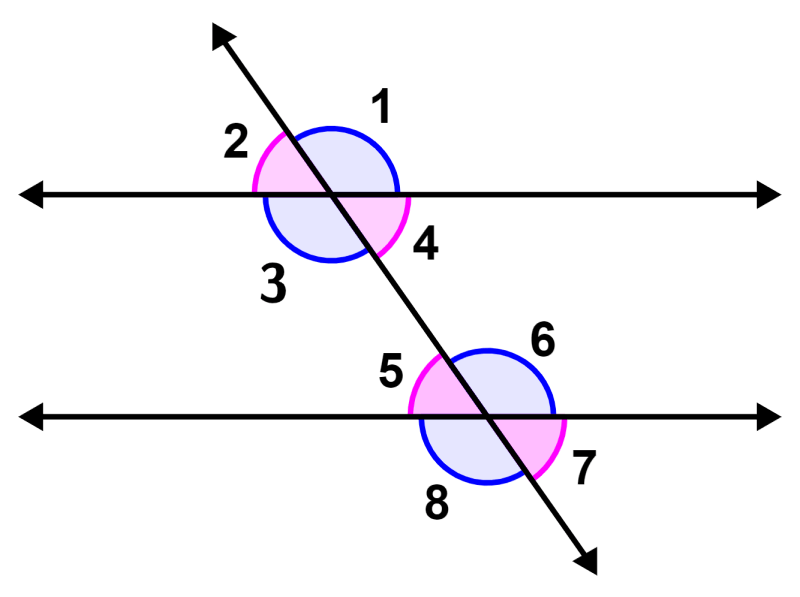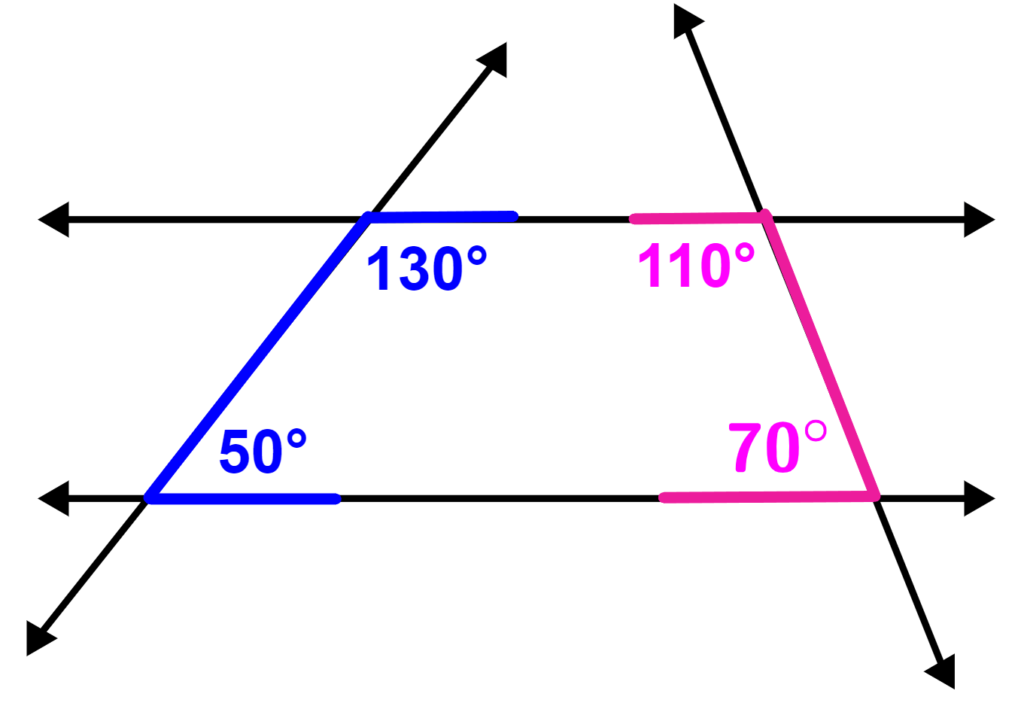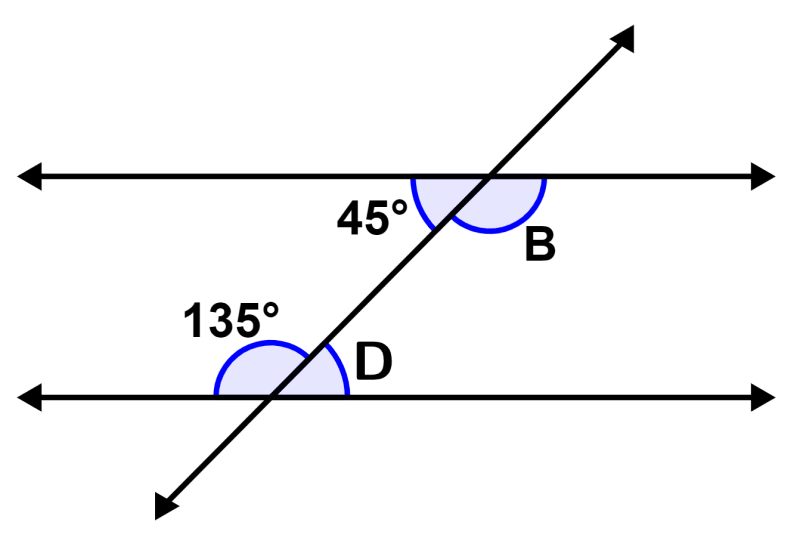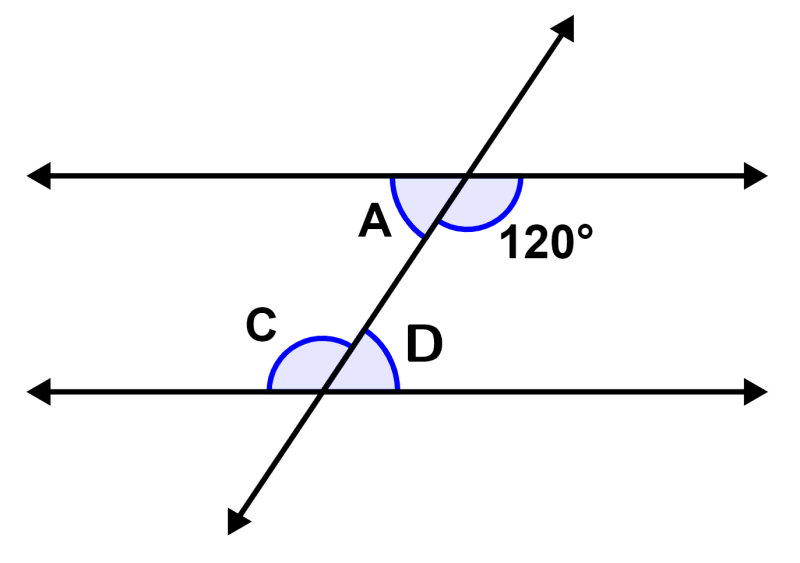Alternate interior angles are the angles formed when a transversal intersects two parallel or non-parallel lines. These angles are located on the inside of the parallel lines but on opposite sides of the transversal. The transversal crosses through the two lines, which are coplanar, at different points. These angles represent whether the two given lines are parallel to each other or not. If these angles are equal to each other, then the lines crossed by the transversal are parallel.
We will explore these angles in more detail below. We will use diagrams to illustrate the concepts and we will learn about some of their most important properties. Also, we will learn about the Alternate Interior Angles Theorem and see its proof. Finally, we will solve some exercises related to these angles.
What are the alternate interior angles?
Alternate interior angles are angles formed when two parallel or non-parallel lines are intersected by a transversal. These angles are located at the inside corners of the intersections and are on opposite sides of the transversal.
These angles are equal if the lines intersected by the transversal are parallel. On the other hand, the alternate interior angles formed when a transversal crosses two non-parallel lines have no geometric relationship.
Let’s consider the following diagram:

We can see that the two parallel lines are intersected by a transversal. This means that the alternate angles within the parallel lines will be equal. That is, we have:
∠A = ∠D and ∠B = ∠C
Properties of alternate interior angles
The following are some of the important properties of alternate interior angles:
- If the two lines are parallel, the angles are congruent.
- Consecutive interior angles are supplementary, that is, they add up to 180°.
- In the case of non-parallel lines, alternate interior angles have no specific properties.
Alternate interior angles theorem
This theorem indicates that “if a transversal crosses two parallel lines, the alternate interior angles are congruent.” To prove this theorem, consider the following diagram:

From the properties of parallel lines, we know that if a transversal crosses through two parallel lines, the corresponding angles and opposite vertical angles are equal to each other. Therefore, we have:
∠2 = ∠5 (corresponding angles)
∠2 = ∠4 (opposite vertical angles)
From these two expressions, we can conclude that:
∠4 = ∠5 (alternate interior angles)
Similarly, we also have:
∠3 = ∠6 (alternate interior angles)
Co-internal angles
Co-interior angles are the angles that are on the same side of the transversal. The co-internal angles add up to 180°. This means that the interior angles, which are on the same side of the transversal, are supplementary.
Co-internal angles are shaped like a “C” and these angles are not equal to each other. These angles are also known as the consecutive interior angles or the interior angles of the same side.

Alternate interior angle examples with answers
Alternate interior angle exercises can be solved using the properties of parallel lines.
EXAMPLE 1
Find the value of B and D in the following figure:

Solution: Since the 45° angle and D are alternate interior angles, we know that they are congruent, so we have:
D = 45°
Similarly, the 135° angle and B are alternate interior angles, so we have:
B = 135°
EXAMPLE 2
Find the value of A, C, and D in the following figure:

Solution: The angles ∠A, 120°, ∠C and ∠D are internal angles, so we know that we have:
∠C = 120°
By the supplementary angles theorem, we know that we have:
∠C+∠D = 180°
∠D = 180° – ∠C = 180° – 120° = 60°
EXAMPLE 3
If we have that the angles (4x-19)° and (3x+16)° are congruent alternate interior angles, what is the value of x?
Solution: The angles are congruent, so we have:
4x-19 = 3x+16
4x-3x = 16+19
x = 35
This means that the given angles are equal to:
4(35)-19 = 121°
EXAMPLE 4
Two consecutive interior angles are (2x + 10)° and (x + 5)°. Find the measure of the angles.
Solution: Consecutive interior angles are supplementary, so we have:
(2x+10) + (x+5) = 180
3x+15 = 180
3x = 165
x = 55
Therefore, the consecutive interior angles are:
2x+10 = 2(55)+10 = 120°
x+5 = 55+5 = 60°
See also
Interested in learning more about angles? Take a look at these pages:




